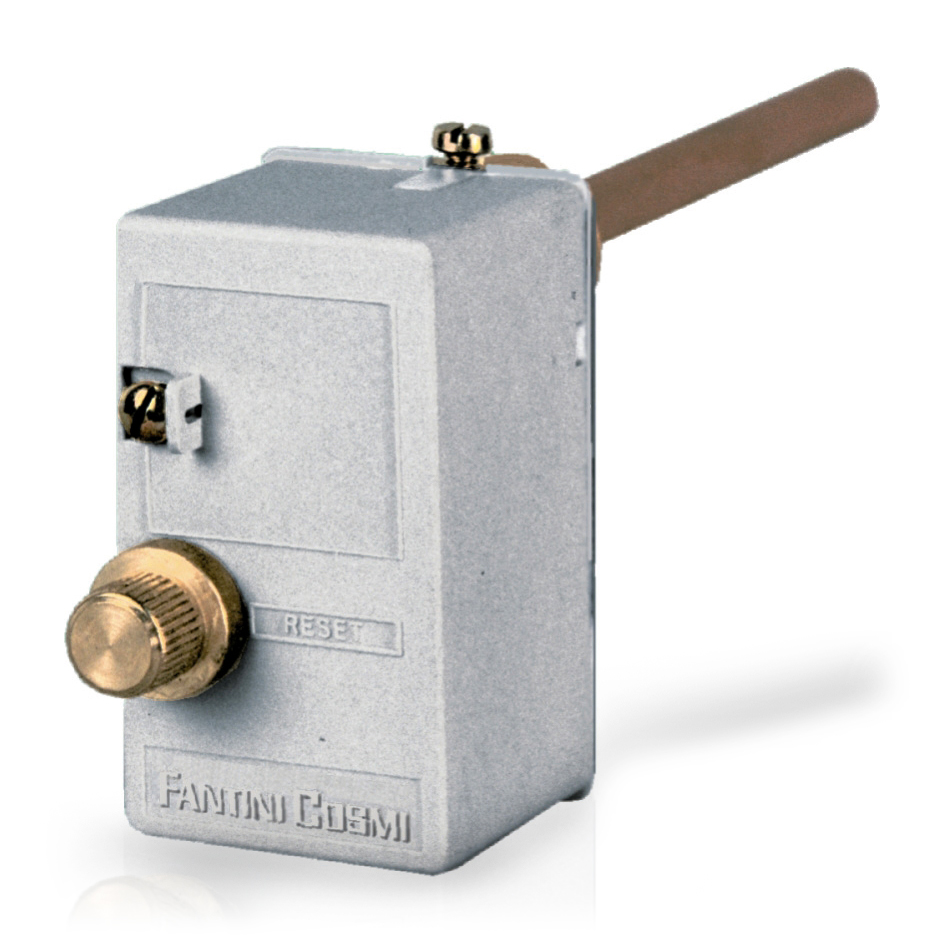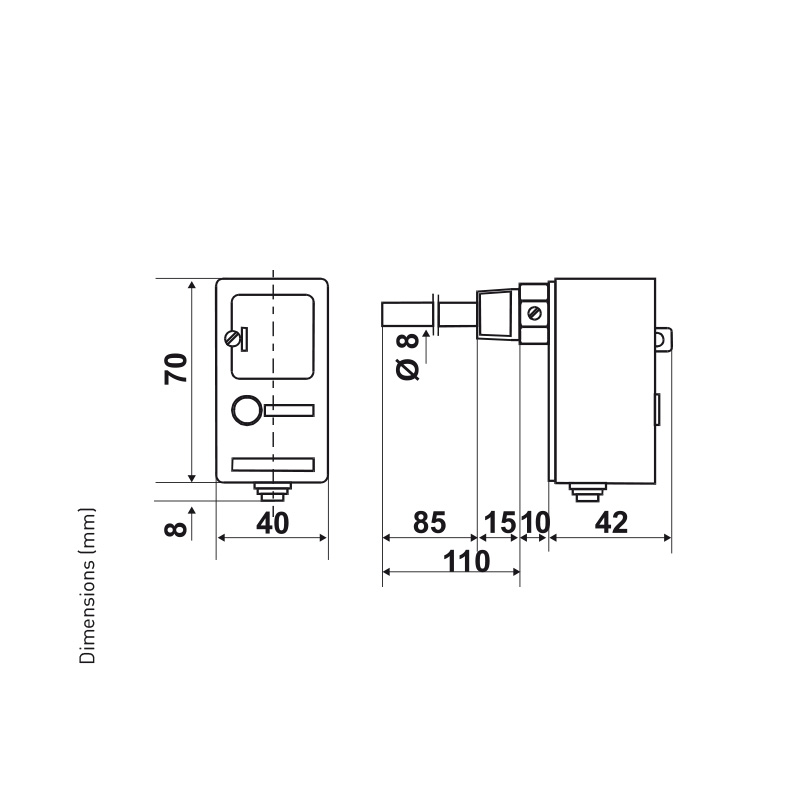Positive safety lockout immersion thermostats
-
DESCRIPTION
General features0
Positive safety lockout thermostats, for boilers and heating systems, should be connected in series with a control thermostat.
- Liquid expansion operation.
- Direct immersion mounting of the bulb via threaded sheath Gc1/2 (included).
- Sensitive element with stainless steel diaphragm
- Copper bulb and capillary.
- Copper sheath with Gc ½ PN10 connection
- Base and cover in shock-proof selfextinguishing thermoplastic V0.
ACCESSORIES
- Cod. 303298LA: cable gland G1/2 for connection output in shock-proof self-extinguishing thermoplastic material V0.
- Cod. G30: copper sheath Gc 1/2 PN10 bar, length 100mm, Ø 8mm.
Electric features- Rated insulation voltage Ui 380V~
- Continuous duty rated current Ith 15A
-
ADVANTAGES
0
Positive safety lockout thermostats, for boilers and heating systems, should be connected in series with a control thermostat.
Advantages -
TECHNICAL SPECIFICATION
CODE LOCKOUT ACTION LOCKOUT ACTION TOLERANCE MAXIMUM BULB TEMPERATURE PROTECTION DEGREE C06A3M 100 °C + 0 - 6 °C 150 °C IP40 C06B3M * 90 °C + 0 - 6 °C 150 °C IP40 * delivery time and minimum purchase quantity upon request -
HOMOLOGATION AND INSTALLATION
Homologation
- Compliance with standards EN 60947-5-1, EN 60730-1.
- Compliance with Directive 2014/68 / EC (PED);
- ENEC certificates.
Installation and use- Direct immersion mounting of the bulb via threaded sheath GC 1/2 (included in the package).
- When the temperature increases are opening the contacts 1-2.
- Liquid expansion function.
- If the system reaches the limit temperature, the thermostat interrupts the electrical circuit and to reactivate it is necessary to act on the manual reset (after the temperature has dropped until ~ 25 ° C).
- In case of breakdown or failure of its sensing element, the thermostat interrupts the electrical circuit and is no longer possible to reactivate the system (is necessary to replace the thermostat).
- TECHNICAL LITERATURE
-
FAQS






